Power your home and adventures with the Anker SOLIX C1000: a 1056 Wh LiFePO4 powerhouse delivering 1800 W continuous (2400 W surge). Fast-charge to 100% in just 58 minutes and enjoy seamless UPS protection for sensitive electronics.
- UltraFast Recharge: 0→80% in 43 min; full 100% in 58 min via AC (enable UltraFast mode in the Anker app).
- Decade-Long Durability: LiFePO4 cells rated for 3,000+ cycles over a 10-year lifespan.
- Massive Output: 1800 W continuous, 2400 W surge; supports 99% of appliances through 11 versatile ports.
- Solar Ready: Up to 600 W MPPT input (11–60 V, 12.5 A max) for eco-friendly charging anywhere.
- Seamless UPS: < 20 ms transfer protects connected devices during outages.
- App Control: Monitor power, switch modes, and update firmware via Bluetooth/Wi-Fi.
- Compact & Portable: 28.4 lb, 15% smaller footprint than competing 1 kWh stations—ideal for home backup, power outages, and camping.
| Capacity | 1056 Wh (LiFePO4) |
|---|---|
| Output Power | 1800 W continuous, 2400 W surge |
| AC Outputs | 3× 110–120 V pure sine wave |
| USB-C Ports | 2× 45 W (100 W max on one) |
| USB-A Ports | 2× 18 W |
| DC Outputs | 1× Car (12 V/10 A), 1× 12 V/10 A |
| Input | AC UltraFast & 600 W solar (11–60 V) |
| UPS Transfer | < 20 ms |
| Dimensions | 14.8 × 8.07 × 10.5 in |
| Weight | 28.4 lb |
| Cycle Life | 3,000+ cycles |
| App Connectivity | Bluetooth + Wi-Fi |

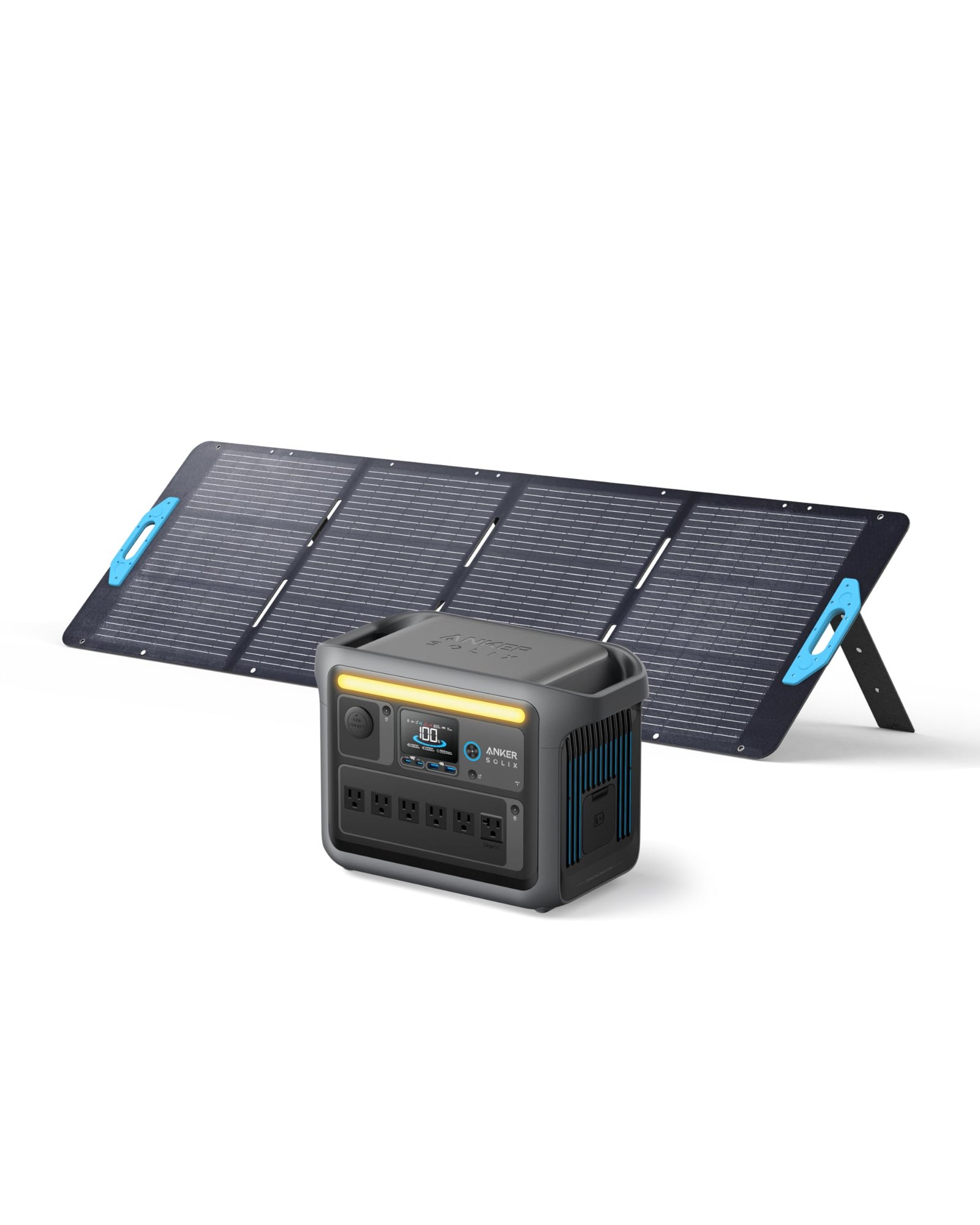

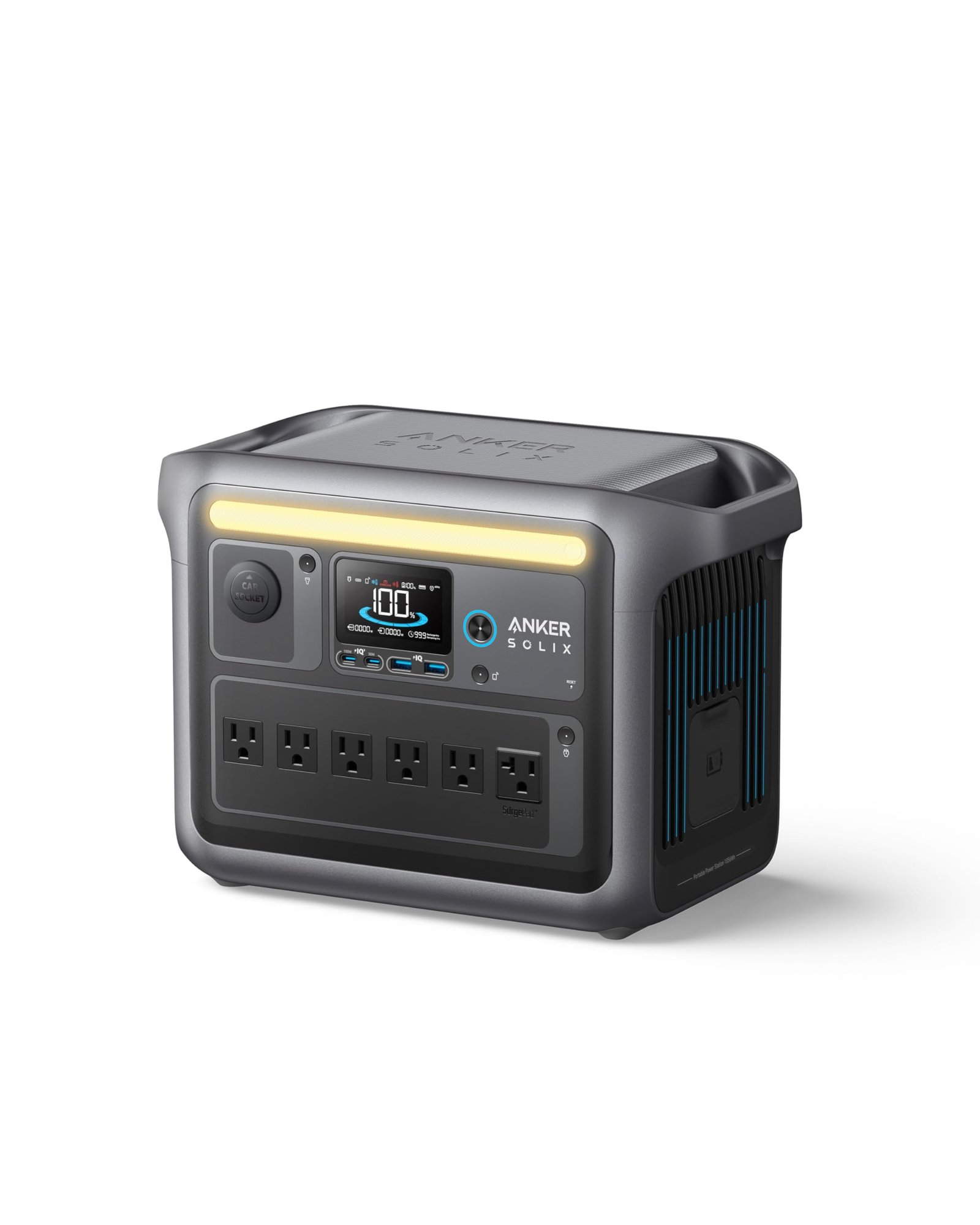


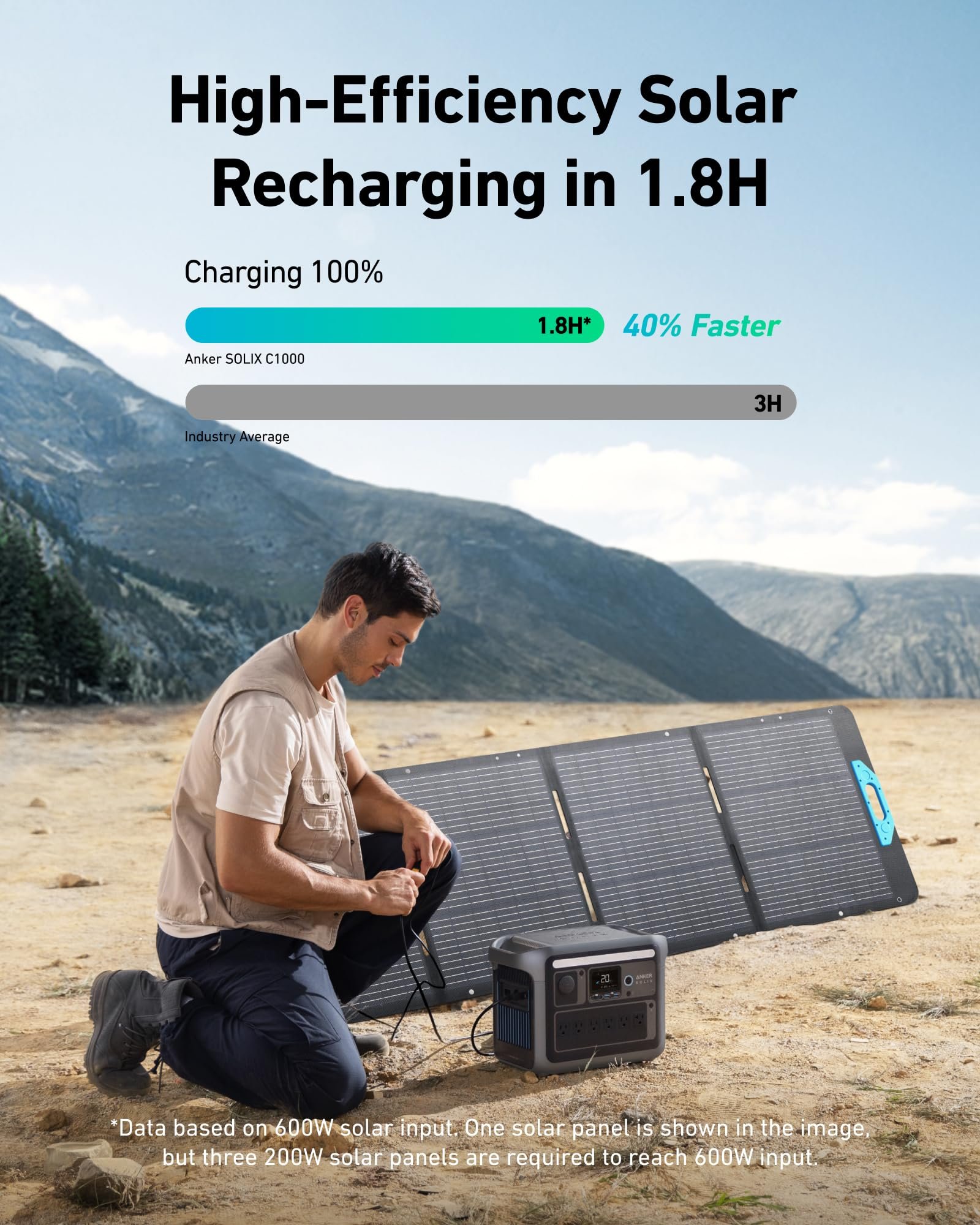
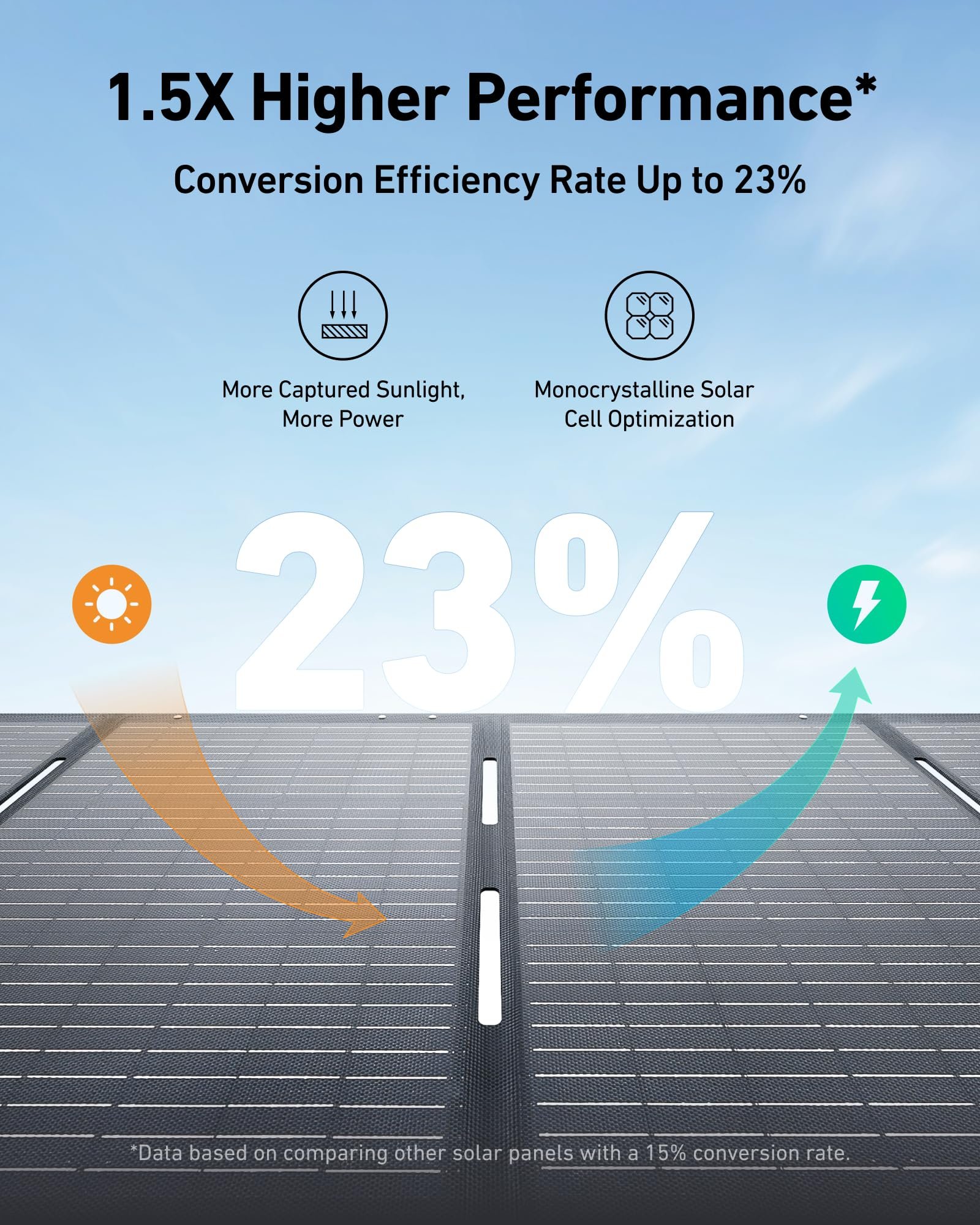

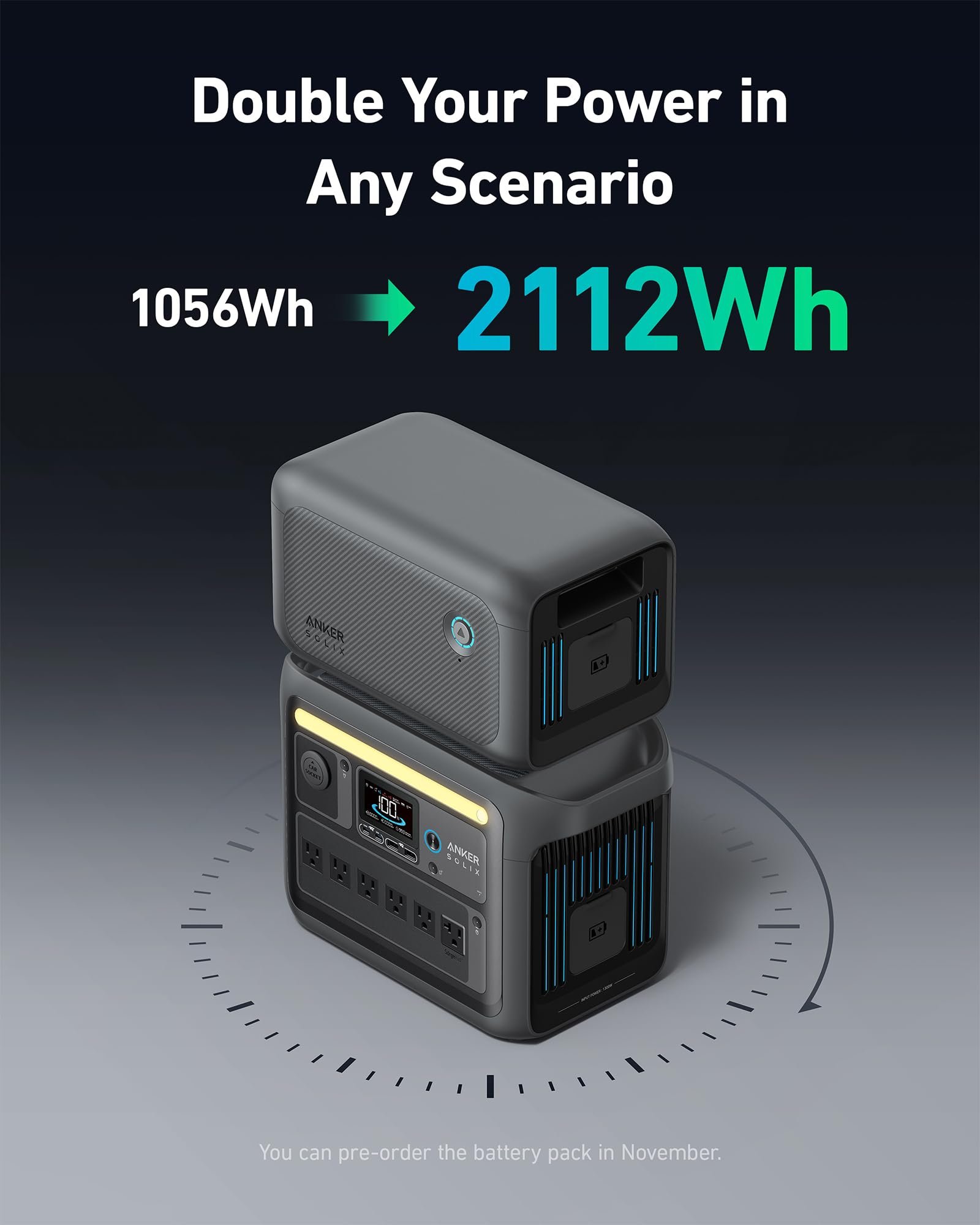

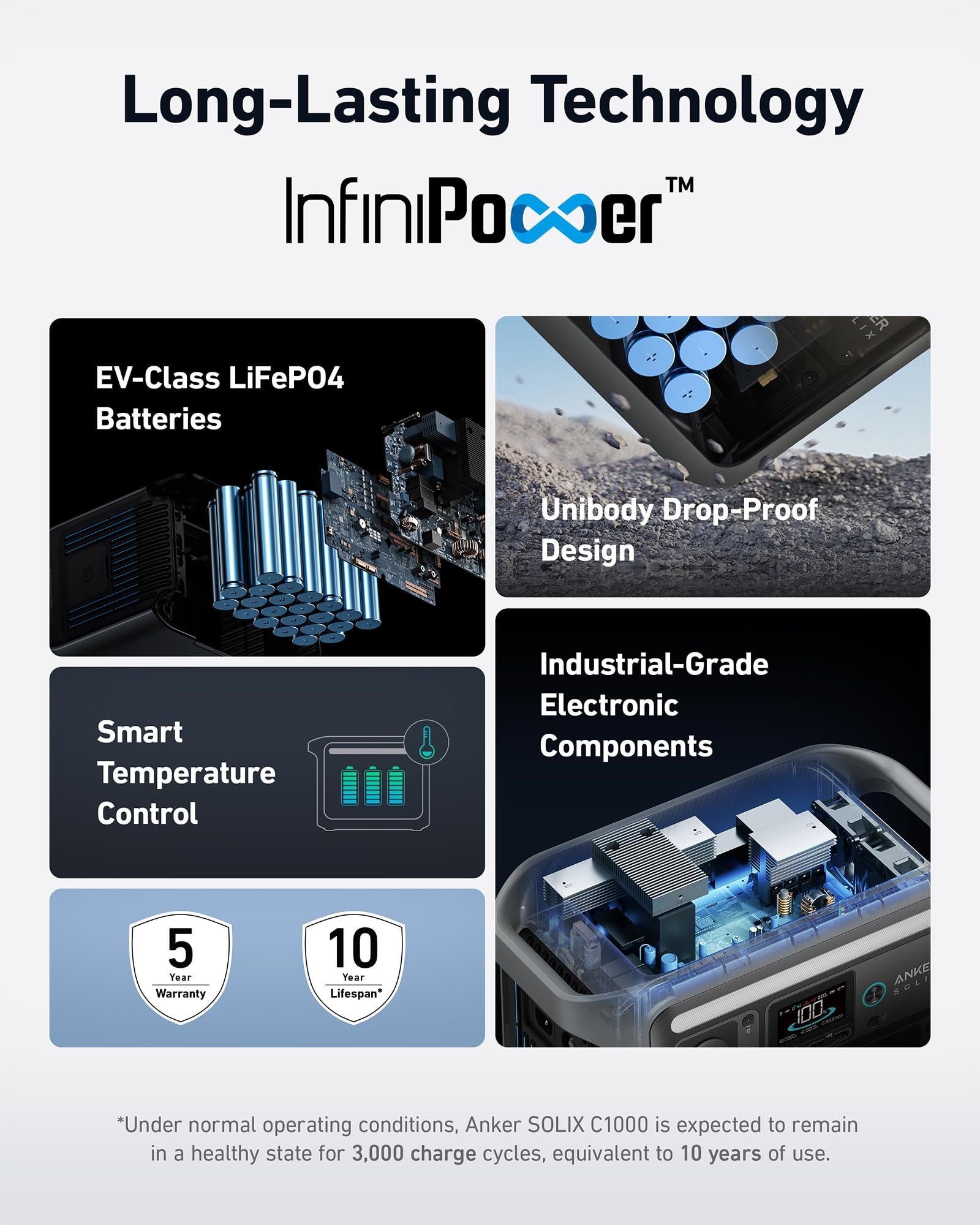

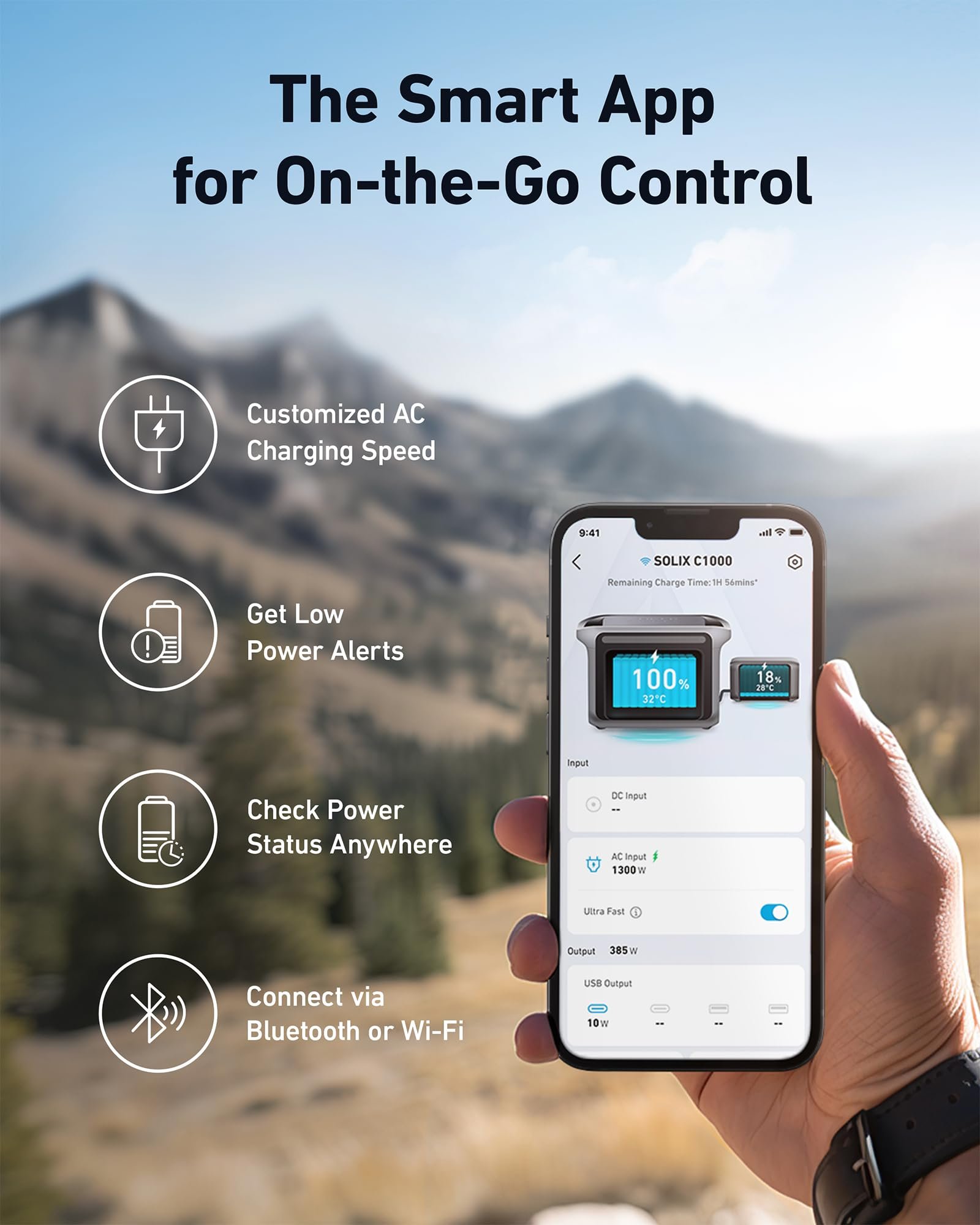
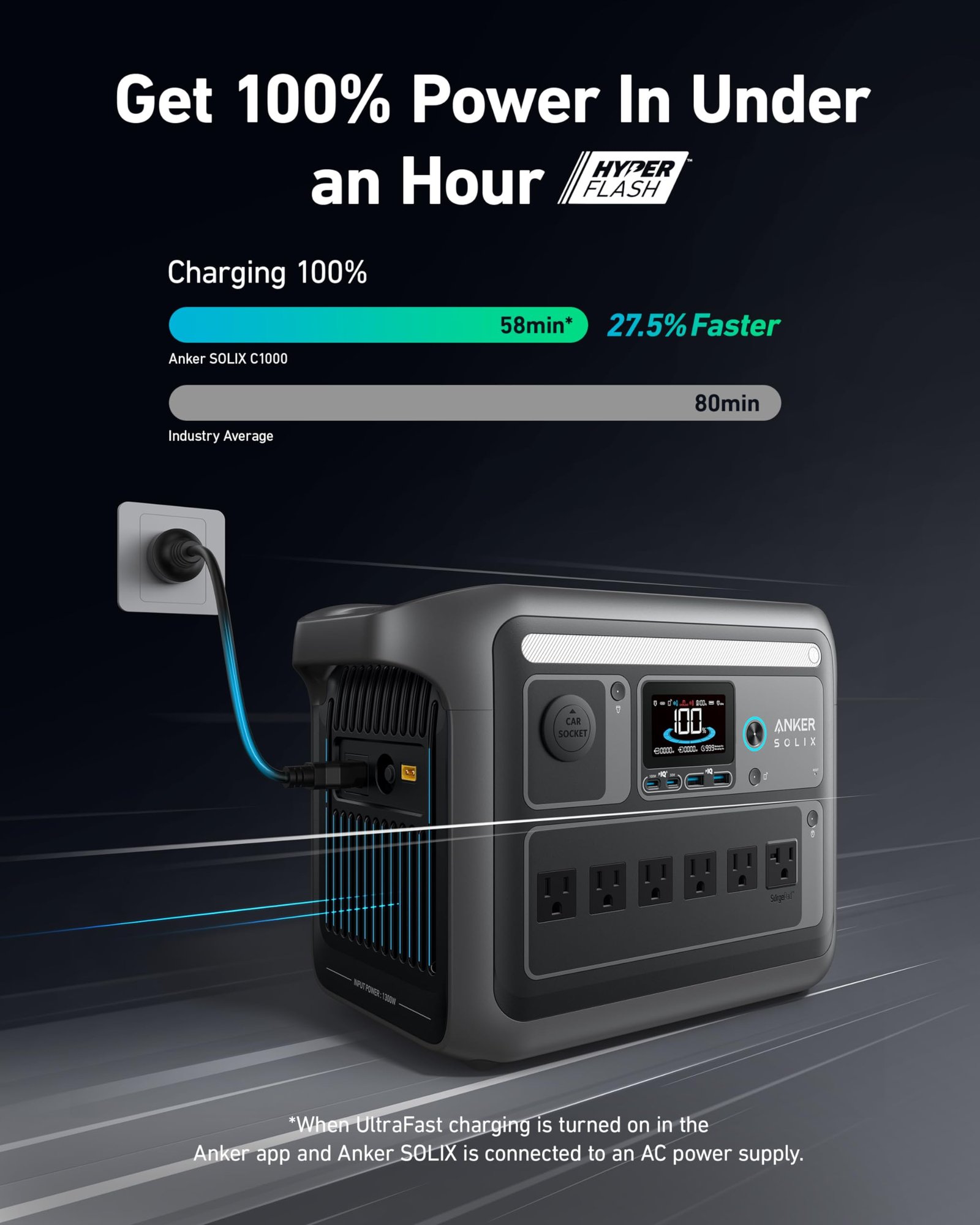
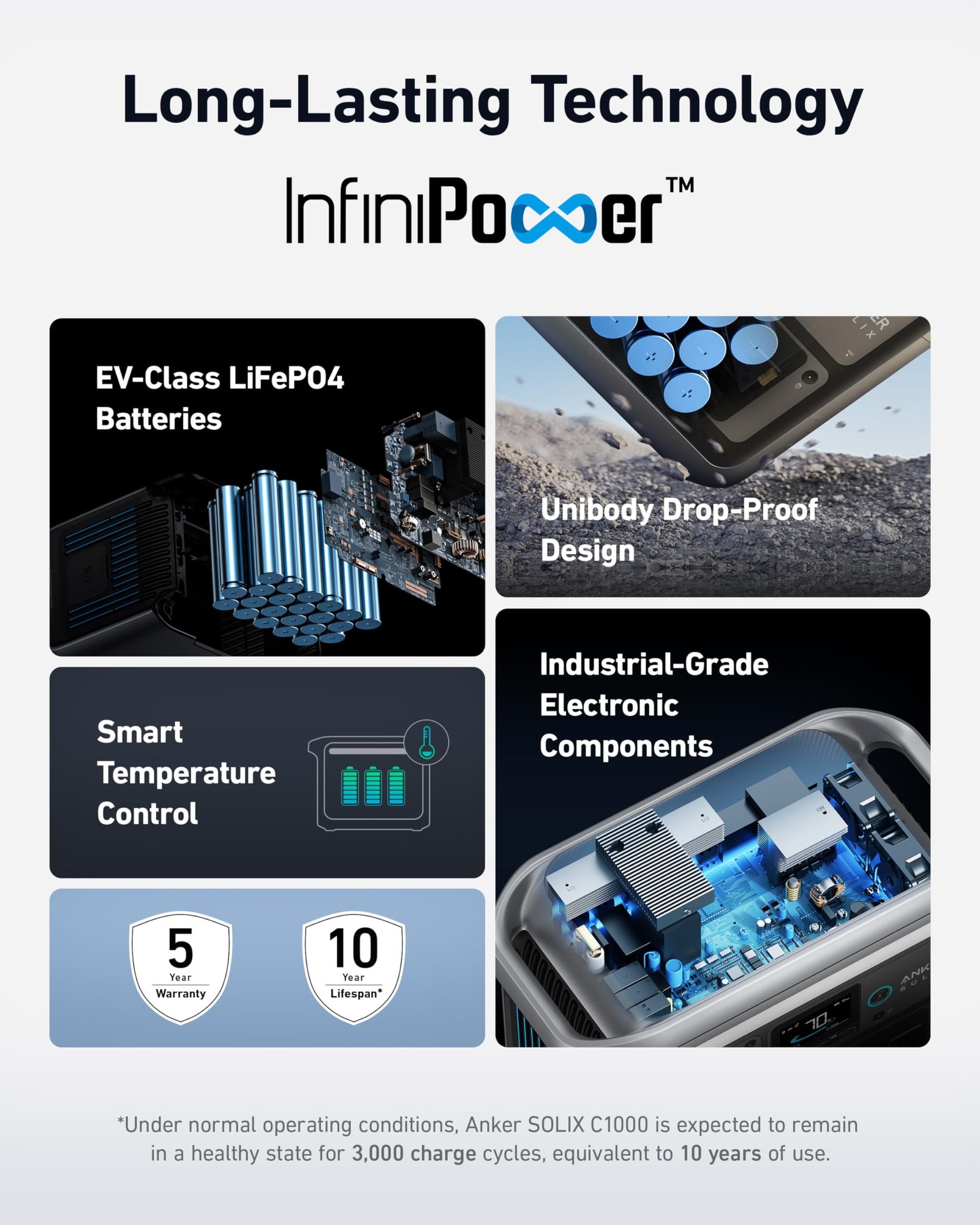




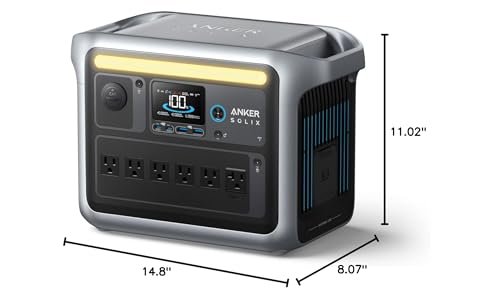


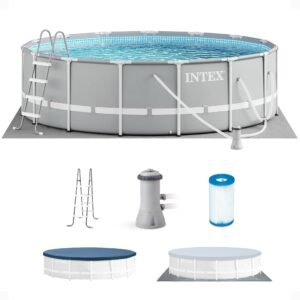
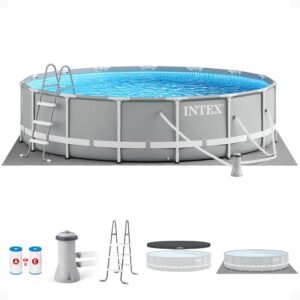


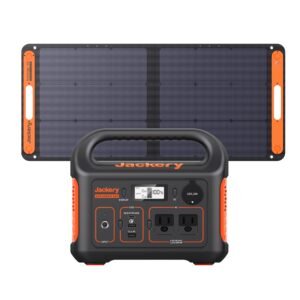



The Anker SOLIX C1000 is an absolute powerhouse! With its 1056Wh LFP battery, 1800W output (2400W surge), and 6 AC outlets, it easily powers everything from small electronics to larger appliances. The included 200W solar panel is efficient, allowing off-grid recharging. Its lightweight, portable design makes it perfect for camping, and the build quality is exceptional. Whether for home backup during power outages or outdoor use, this power station delivers reliable, long-lasting energy. Highly recommend for anyone needing a dependable, versatile power solution! I wish the extra battery would be more affordable
We started with just 2 of the C1000s. We wanted something for backup on our refrigerator and freezer. The C 1000, by itself, will not run a regular size energy star refrigerator for a full day. It will run a TV for about 5 hours. We were surprised to find that most non energy star TVs pull 200 watts when on and about 50 watts when off. (Our 65" TV and 32" TV use nearly the same amount of energy)
If you think you are going to quickly charge these power stations with 200 watts of solar panels, you will have to think again. Two 100 watt panels charge at a rate of 30 or 40 watts. To charge the C1000 takes around 25 or 30 hours of sunlight. To charge the C300, it takes about 10 to 12 hours of full sun. We use two 100 watt panels for the C300 because the total output is so low, and they are compatible with the C300. We found that the C300 will not keep my cPap running through the night. We've dedicated a C1000 for it.
We purchased three battery expansion units and they make a big difference. The energy star refrigerator runs a full day. The TV runs 10 hours and since we keep the news on almost all day long, the expansion battery helps.
We like these units so much that we've decided to run all of our major appliances from them as the main power source. At first, we thought we'd charge it from the wall outlet, AC, but the calculations show that it uses as much power as the appliance so there is no energy consumption savings. We can charge the unit via AC or solar panel as the power station provides power to our appliance.
We've decided not to use the BP 1000 for our other freezer or even other refrigerator, we plan to use 2 C 1000 per major appliance. That way, when one runs out, we can safely disconnect it and reconnect the other C 1000. It affords us the ability to continue to power our appliance while the depleted C1000 is charged. Currently, we have the C1000 connected to 3 200 watt panels which supply about 200 watts total output. So it takes 5 hours of full sun to charge.
Doing research, I've found that the absolutely best solar panel only generates about 25% of it's rating. Keep that in mind. Be mindful of the IP67 or IP65 rating of the panel you are going to purchase. An IP67 can be submersed in water for a short period of time, so I think it is OK to be in a light rain for a period of time. In fact, it is rated for rain. An IP65 can take a splash of rain, we have a couple of IP65, because we didn't know, but we make sure they are used only when it is a bright, dry, sunny day. IP65 panels are less expensive.
When shopping for a power station, be wary of the ones that say you can run your dryer for 30 hours, and they are showing small units. Do the calculations. P = I E which means that Power (in watts) = Current (in amps) TIMES Voltage (in volts). We need to run a sump pump 24/7, pumps are typically rated in AMPS. Our 1/6th hp sump pulls 4.4 amps so that means it needs between 506 and 528 watts PER HOUR. For us, that means we need a power station that will give us nearly 13 KW for a day. What that means, for us, is that we need a pretty huge system that can be charged by solar. It will take a lot of solar panels. Fortunately, we don't have to run the sump all the time so we can use the power station to run our furnace, washer, and dryer.
If you are thinking of getting a P 300 for device charging. I've found that iPads pull about 10 watts and the charging cable makes a difference. My old cable won't even charge off the P 300.
We had some issues with the app, but it is working fine right now. It is really nice to be able to monitor the unit's charging status and the discharge status. It is also nice to be able to shut off lights right from the app.
That's my take on the Anker C1000, C300 and BP 1000. I like them, my husband likes them and we started with 2 and are up to 7. At 30 pounds, they are not too difficult, for my ancient husband to move around. We are both ancient and that should tell you that it is easy to set the app up because that is what I do.
The blackouts in the Iberia area of Europe on April 28, 2025 should stand as a warning for all of us. It can happen. In any event, really consider Anker. We are now considering a couple of the F3800 because they can be charged with a GAS generator.
The 6 AC outlets and the various USB ports with the capacity of the battery life means the Anker C1000 was ready for supporting our family through a long night of power outage if necessary. Thankfully it was only for 2 hours this time but the next time around, the C1000 will be ready and give us a little more peace of mind.
The Anker Solix C1000 arrived 03/27/2025, (5 to 8 days prior to estimated delivery - excellent). Packaging was sturdy. Item had approximately 80% power available. Per instructions plugged it in and powered it to 100%. Will be testing it out with a B&D toaster oven and Keurig k-slim coffee maker in our RV. To be used when boon-docking at state and national parks where you can't start a generator before 8 or 9 am.
04/01/25... not an April fool's joke
After a day unplugged it showed 100%. On 08/30/25, brought it to the RV, turned it on and plugged Keurig coffee maker in and made a 10 oz cup of coffee... 98% left. Left the coffee maker plugged in and added toaster oven and turned both on... power supply shut down. Too much of a draw. Made sure both devices were in off position and turned on (again) the Solix C1000, then turned just the toaster oven on... ran flawlessly until english muffins were done (maybe 4 or 5 minutes)... 86% left. Based on this I am figuring that the Solix C1000 will adequately give us probably 3 mornings of service easily before requiring a recharge. That would equate to about a single use of the toaster oven each morning and about 6 or 7 cups of morning coffee per day. And that powering both the coffee maker and toaster oven [both necessary for a good morning] simultaneously is too much of a power draw. Again, this is pretty much for use when boon-docking.
Pretty darn good, and very good for the price paid through Amazon ($449.00 flash type sale... much higher now due to tariffs).
Should my evaluation change in the future, I will try to remember to update this.
gvm
8/7/24: With everything automated I've had absolutely no complaints. For whatever reason power goes out at 7am now quite regularly for about 10-15 seconds - this battery keeps my office going like nothing happened. I continue to offload power during peak hours without even a thought (automated plugs scheduled to turn on/off). The Anker app continues to work amazingly. Couldn't ask for better. I rarely hear the fans unless it is charging (and even then it's not loud if you keep the charging around 400w).
I did end up getting a C800 - just cuz I loved the 1000 so much. lol. I have it (acting as an UPS) for our ISP router and lamps in another room during peak hours - and it's a bit more mobile when I need power in places away from a plug. Also works nicely with the Anker App (both show up side by side).
My little place is ready for the rain and storms this fall/winter! I am planning on using these batteries for their full lifespan or until something major comes out.
6/3/24: Have had 0 problems with these batteries. Been using them almost every night to power my office from 4pm-9am. Excellent product - very happy with it. It's comforting knowing that I could power my place (fridge, internet, TV, computers) for at least 24 hours if we lose electricity again. Meanwhile, they function as power surge / protection and offload power to cheaper off hours (actually saving some money doing this - albeit very little but it's adding up every day). I bought some automated plugs that my phone turn on/off when it's 4pm-9am so I don't have to do anything to "offload" my power to cheaper times. LFP batteries are great - Anker is great. Hope y'all have a great 2024!
4/14: Finally - Firmware Update Fixes External Battery Issue
A few days ago Firmware 1.4.3 came out - looks like this has fixed the issue where when using the battery as an UPS and pull power for long periods of time then reconnect power - charging would refuse to happen unless one powered down/back up the external battery.
Been using my C1000 + external battery now for awhile to power my office from 4pm - 9am (averaging 70% of the external battery to 100% of external battery). Been working great (got in the habit of manually pressing the external battery button to power it down/back on every morning - so it would charge at 9am - looks like I don't have to do any anymore). :D
Very happy with these batteries! Got my power setup for years to come.
3/10: Latest Update
External battery still needs me to press the main button on/off for charging to happen almost every day (running on batteries all night, then smart switch turns power back on, the unit won't charge till I turn on/off the expansion battery via front button), which is a little frustrating but not a deal breaker since it's right next to me. I bought a set of 120mm silent fans to cool both units, they seem to keep the fans off for the most part while running on battery or UPS pass through power (internal fans always run when charging - but very low). Most of my usage is around 200w even during gaming nights. We'll see how it does in summer when my room gains 10-15F+.
Been using this battery as an UPS offloading my entire office power from 4pm-9am with smart plugs. Very happy with it. Works well. Comforting knowing if we have another day or two power outage, I'll be able to keep everything running during then.
3/3: Notes on Expansion Battery. Still Happy With Unit!
Been using this device with a smart plug to automatically cut power at 4pm to 8am and for the most part it's been working flawlessly. Every few days it'll get in a weird super slow charging mode where it says remaining charge 4 days and never enter UPS mode (I use this as an UPS).
Usually restarting the expansion battery works for it to "reset" and charge then enter UPS mode. Only a small inconvenience with the Expansion Battery (using it as an UPS).
App is amazing. Batteries are amazing. Device works perfectly as a home office backup system. I plan on using this setup for a long time until a new battery technology comes out. Will report back if I ever get to use this thing in a long outage (powering the fridge, TV, other rooms).
2/24: Expansion Battery Quirks
Noticed some interesting behavior with the Expansion battery. If I plug the C1000 and the expansion battery into an outlet that fails to provide the power that the Anker C1000 is asking for, the entire thing goes into a weird passthrough mode and will refuse to charge (no matter how many times I plug/unplug from power) -- until I turn off the expansion battery and then turn it back on (lucky to figure this out). Initially I thought I broke it, but just turning off expansion battery (press holding expansion battery power button for a few seconds) and then back on returned charging to normal. I see how this has affected some other reviewers. Either removing the massive cable for a few seconds or pressing and holding the button on the front seems to fix this (until it happens again).
I'm very happy with this setup and have been using it to offload my office power from 4pm to 8/9am very successfully. I usually get the expansion battery down to 22% with this setup. If I want to exercise the main unit's battery, I'll just press and hold power for 3 seconds on the expansion battery (no removal needed) and use the main unit for a night. Very convenient! (Using this as an UPS for my office - see below).
2/22: Expansion Battery Arrives!
Absolutely loving this thing. I'm using it to offload my office usage during peak hours (4-9pm). I've had no quirks at all, no complaints. So happy with it, I got the expendable battery (today in the mail).
Cable for expendable battery is HUGE - almost doubles the width of the unit... It is not movable whatsoever, so consider that if you get it.
When initially plugged into the main unit the expendable battery would only charge at 300w despite being set to 1000w (default). After it warmed up from 55F (shipping?) it started charging at the full rate - so there's definitely some battery management going on. With this thing I should be able to run my entire office for more than 24 hours easily.
I bought a silent thin USB Desk fan (just for experimentation) - and this helps keep the unit 10-15F cooler and I never hear the fans, even if pulling close to 160w. We'll see how it does in the summer time.
I sent in a suggestion to Anker asking them to include an option to log wattage draws/pulls since I use this as an UPS primarily. Also suggested a way to cap the battery % at 80% for longevity. They agreed and said they'd send it to their developers. (Cool!).
Very happy with this unit. Glad I waited for LFP power generators.
2/12: Original Review on Main Unit Only
Initial review (2 days of usage):
This is my first battery power generator. I've been watching the market for a long time and didn't want to spend $1000. When we recently had a power outage (6+ hours), I noticed my 256whr Anker couldn't power our fridge due to the startup load. So, the SOLIX C1000 was the obvious choice for cost and power provided - was able to get it on sale for $650. Takes about a week to ship - UPS with almost no updates till it's at your front door.
I've played with this now for a few days... This thing is amazing. It powers everything and anything I throw at it. I can put my 1500w UPS on it and power my entire office without a problem ( the 256 wh Anker 521 instantly shuts off with same load despite ~100-49w constant draw ). I can control and see vital stats via my phone without having to bend over and check the screen. I have run my entire office off of this battery for hours and only used 10% of the battery capacity. I purchased some drop cords to be able to power the fridge/living room if we have another power outage. Will report back on experience when/if this is used.
The recharge rate is amazing, close to 800w and slows down to 600w as it gets closer to 100%. The UltraFast Charging is really nice but expect a lot of fan noise the moment this is turned on. Speaking of fan noise, I am currently using it as an UPS for my office - plugging my 1500w UPS into it and it powering 2 desks (monitors/devices/2 computers). The low fan only came on a few times while powering this setup for several hours (~87-90w constant draw (150w top)) - it's barely audible but considering my previous setup was 100% silent, this is going to probably be temporary as it is winter right now and I imagine the fan noise will be come more of an issue in the summer. I noticed the device was sitting around 83F during very light usage and 95+F during battery draw in a cold winter room <70F. Putting a desk fan on the device's vents instantly drops the internal temperature 10+F so it looks like it wants to sit around 80F in UPS mode. So I wouldn't put this in a closet or in a place that has closed ventilation.
Build Quality? It's plastic. But heavy duty plastic. But for $650 I wasn't expecting a metal chassis I guess. Low fan noise is barely audible and doesn't sound bad. The included cables are VERY short and very bulky. The unit does not creak when carrying it around and it feels like it could survive a good drop.
Note: When I first got the unit, no amount of pressing and holding the power button turned the device on. Was initially worried but once plugging it into the wall, everything started operating like normal.
Seriously considering the attachment battery as it would effectively double my ability to power the house in an outage (right now estimated at around 11-15 hours without conserving).
The Anker app is great - I just wish it had more features and ability to record power usage instead of having a few second stats view. But I can't complain, it does what it does well - have had no problems with it.
Will report back as I continue to use this device daily.
Returned home after a 30 day trip back in May 2024, traveling from NC to upstate NY in our northstar SC 650,. We used this the Solix C1000 with the expansion battery everyday. Although It won't power our rooftop AC, it powered everything else. Came in super handy during quiet hours when we wanted to use our microwave, or keurig coffee maker and so on. We do carry a generator on board so at the end of everyday around 4-6 pm, we would start our generator and backcharge our entire system. Our onboard solar system would charge our "house battery" but the generator would top off the anker system in about 1-1.5 hours depending on how much power was drawn off the system. We keep the system in our camper and backpower through the shore power hookup. It worked flawlessly for the entire trip. It's pretty handy given the weight, I put the main system where we want it and then stack the auxiliary battery and hook them together with the provided cord.
No regrets on this purchase to date.
The C1000 and BP 1000 work well for our specific needs and physically handling the system wrt weight is just right!
Hope this update helps someone out who is looking for a similar system for a similar application.
After purchasing the solix C1000 and then partnering it with the BP1000, I have doubled the output watts I desire to power my northstar sc650 truck camper over a longer offgrid experience.
Although I've not tested it on a multi day trip yet, but testing over several hours and running the things I normally would on shore power, I am extremely happy with what it can now power over extended periods of time.
Literally running multiple items from our microwave, furnace, hot water heater, and more, when plugged into the surge pad socket with a 15 amp cord I am essentially running
everything I need when I need it.
The BP1000 discharges first and then will consume power from the C1000 and Vice-versa when charging the system back up.
I believe that the system is setup this way so that the user will always have control over power charging and discharging
The system does not have a pass through charge function but rather works like a UPS system in the sense that when plugged into shore power and backcharging, if power is needed to run something, the system will stop charging and immediately switch into ups mode and power what you need in the moment.
Our plan is to use this system in campgrounds during quiet hours when gas generators cannot be used.
Based on our particular wants & needs, I Would highly recommend.
I wanted something small but that packed a high watt output when I need it.
So far, so good. Boondocking in my northstar truck camper I am able to backpower the entire camper with the Solix C1000 for about a 24 hour period.
This depends of course on what I am running. Occasional microwave oven use, my fridge on propane setting, lights, water pump, even the hot water heater and hot air furnace, again, limited high use items.
Only used so far on 2 overnight trips.
Next morning I use an 1800-2200 watt generator to power the anker back to full from about 15% only drawing a set watt charge of about 750. The generators rpm only increase a little bit and the anker is charged in about 1 hour and 30 minutes.
I could increase my charge watts to 1000 and be done inside of 50 minutes or less but I want to break the unit in several charge cycles first and I like running my generator on eco mode.
The anker is not heavy at only 28 lbs and I can set it up on my campers kitchen counter or just about anyplace else inside my rig.
I bought it for $650 from amazon, anker Direct, and it shipped to my house in under 5 days and came in just under $700 total, a great buy in my opinion.
I am looking to eventually buy the expansion battery to give more power in depth but am in no rush at this point.
I am 100% satisfied with this small yet powerful unit. It definitely lives up to what it says it can do, also, the app is simply incredible.
Great job to the folks at anker.
Highly recommended, just do your homework on what you plan to use it for.
I've been a goal zero fan for years but it's the older led acid yeti 400 and 1250 units.
Great products and they still work great, I also have the ego nexus system and run 7.5 amp batteries on it, again, great units all around but this anker system takes the cake.
Size, weight, power output, and charge times is what sold me!!
Happy shopping.